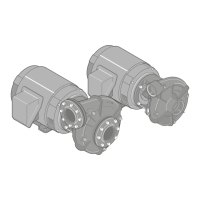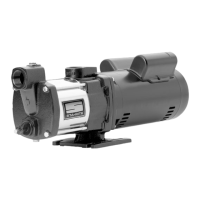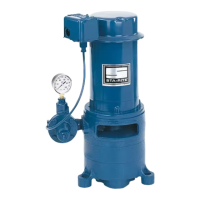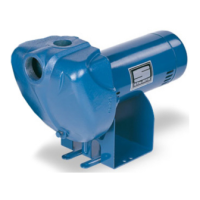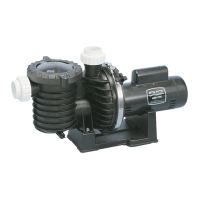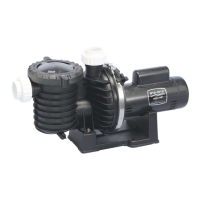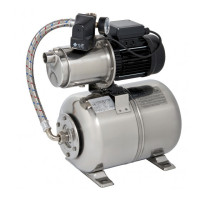3
California Proposition 65 Warning
This product and related accessories contain
chemicals known to the State of California to cause
cancer, birth defects or other reproductive harm.
PIPING - GENERAL
Support both suction and discharge piping independently
at a point near the pump to avoid putting a strain on the
pump housing. Start all piping AT THE PUMP.
Increase pipe diameter at both the suction and discharge
by one (1) standard pipe size (minimum) to obtain desired
performance and flow rate. Refer to Table I when sizing
pipe for your pumping system.
NOTICE: Do not use pipe with smaller diameter on the
suction side of pump.
Do not allow pump or any system component to freeze.
To do so will void warranty.
TABLE I
Pump Port Recommended
Size (NPT) Pipe Size
Suction Discharge Suction Discharge
1-1/4 1 1-1/2 1-1/4
1-1/2 1-1/4 2 1-1/2
2 1-1/2 3 2
SUCTION PIPE
Increase pipe size from pump suction port as shown in
Table I.
Figure 1 (Page 2) depicts a recommended run of pipe and
fittings for the suction side of a centrifugal pump. Please
refer to this illustration when choosing pipe and fittings for
your suction connection.
IMPORTANT: All connections must be air tight!
Figure 2 (Page 2) depicts conditions that are NOT
DESIRABLE on the suction side of a centrifugal pump
and may cause problems in flow rate and priming. Please
look this illustration over carefully before choosing pipe
and fittings for your suction connection.
DISCHARGE PIPING
Increase pipe size from pump discharge port as shown in
Table I. Figure 1 (Page 2) depicts a recommended run of
pipe and fittings for the discharge. Install tee with priming
plug as close to pump as possible. Figure 2 (Page 2)
notes conditions that should be avoided. Please read over
carefully before making discharge connection.
PRIMING THE PUMP
A pump is primed when all air in the suction line and
pump volute has been evacuated and replaced with water.
To Prime:
1. Close valve in discharge line.
2. Remove priming plug from tee and fill pump and
suction line with water until water is flowing back out of
tee.
3. Replace priming plug.
4. Start pump and slowly open valve until desired water
flow is achieved.
NOTICE: If water is not being pumped, turn off pump,
close valve, and repeat steps 1 thru 4.
If pump volute is rotated as shown in Figure 1 (Page 2),
loosen vent plug when priming to evacuate air trapped
inside volute. Tighten when volute is completely filled with
water.
Never run pump against closed discharge.
To do so can boil water inside pump causing hazardous
pressure in unit, risk of explosion and possibly scalding
persons handling pump.
NOTICE: Do not run the pump dry. This will damage
mechanical seal and void warranty.
Burn Hazard. Motor normally operates at
high temperature and will be too hot to touch. It is
protected from heat damage during operation by an
automatic internal cutoff switch. Before handling pump or
motor, stop motor and allow it to cool for 20 minutes.
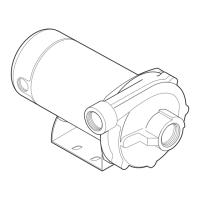
